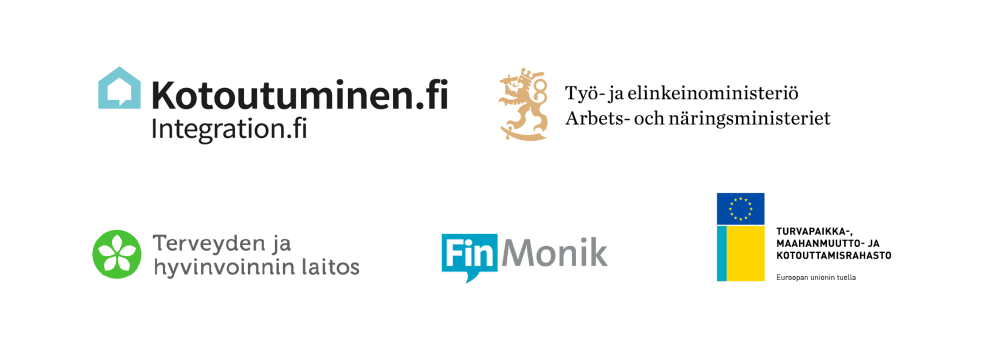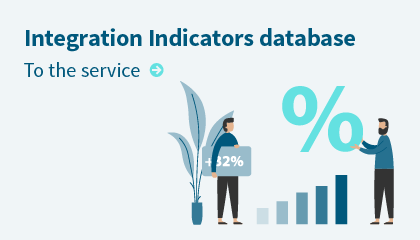The Integration Indicators database is an open statistics database based on register and survey data. It is used to monitor the state and development of integration in Finland. The indicators are divided into five themes: employment, education, wellbeing, participation and two-way integration.
The indicator database is easy to use. You may customise it and target statistics that are relevant to your work.
Three steps to use the Integration Indicators database
- First, choose the topic that you are interested in.
- Next, choose the variables. Select also the regional level and other necessary information. If there are variables marked with an asterisk, you must select at least one value under each of these variables.
- Finally, you may reorganise the rows and columns in the table to make them easier to read, save the table in Excel format, or download the tables and graphs. Open the ‘About table’ to find more detailed information about the variables.
Use statistics carefully
The Integration Indicators database uses register data from Statistics Finland as well as a survey carried out jointly by Finnish Institute for Health and Welfare, the Ministry of Economic Affairs and Employment and, among others, municipalities in the Helsinki metropolitan area on person’s with a foreign background living in Finland as its main sources (in the future, the KEHA Centre will participate in the development and implementation of the survey instead of the Ministry of Economic Affairs and Employment). After each indicator name, it is noted whether the indicator is based on statistical data or survey data.
Due to differences between types of data, indicators based on the data are not always directly comparable. For example, higher education degrees completed in Finland can be found in the register data, but the number of degrees completed abroad has been assessed on the basis of surveys.
Almost all indicator data have been prepared using information on residential area, gender, country of origin and age group and time of stay in the country. The data are classified by country of origin group to avoid compromising data protection. Indicator data sources also occasionally use varying classifications. For this reason, the countries and continents where the indicators originated vary depending on whether register or survey data have been used as the source.
The choice of appropriate monitoring indicators is based on which phenomenon is to be measured and how, and on what type of data are available. The best overall picture is obtained by examining data based on registers and surveys in parallel.
This is how you refer to the database
Reference (Integration Indicators database, 2020)
Table of sources
Integration Indicators database: Insert the name of table here [online publication]. Table: Insert the exact name of table here. Helsinki: KEHA Centre. [referenced on Insert date]. Accessed on: Insert the online address of table here.
Example reference
Integration Indicators database: Housing (online publication) Table: 125v -- 001 -- Housing by type of household dwelling unit and living space: regions and largest cities, 2005–2019. Helsinki: KEHA Centre. [referenced on 30 September 2020]. Accessed on: http://kototietokanta.stat.fi/PXWeb/pxweb/fi/Kototietokanta/Kototietokanta__asum__kieli/koto_askut_kieli_001.px/?rxid=9cc86182-0bf1-4ee2-bd47-51f929ac2e3f
Built in cooperation with Finnish Institute for Health and Welfare
The Integration Indicators database was built in cooperation with the Finnish Institute for Health and Welfare. Some of the indicator data in the database was produced with the support of the Asylum, Migration and Integration Fund (AMIF).
The database was developed using PX-Web technology and it is maintained by Statistics Finland.





